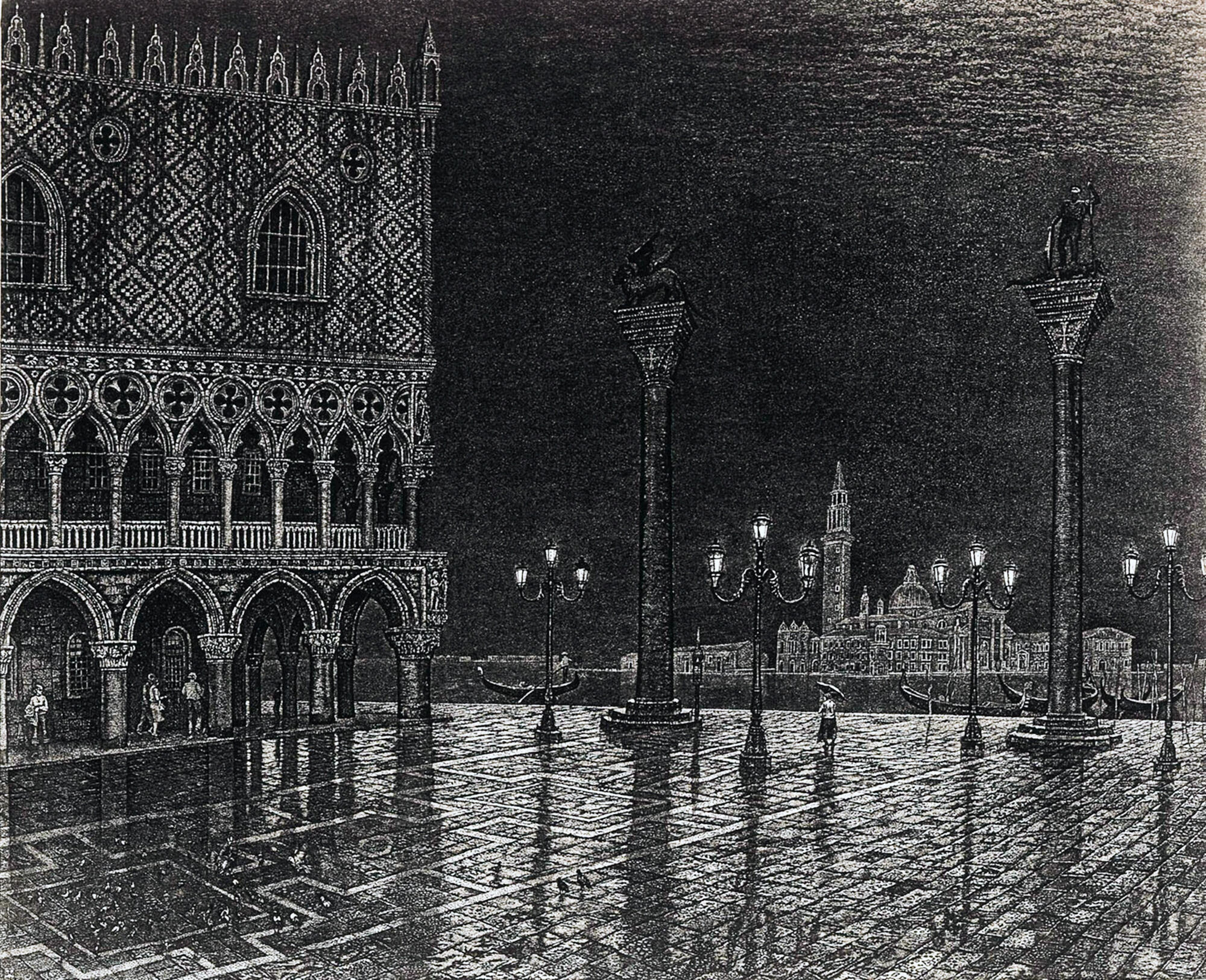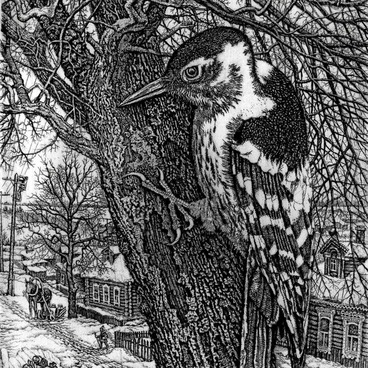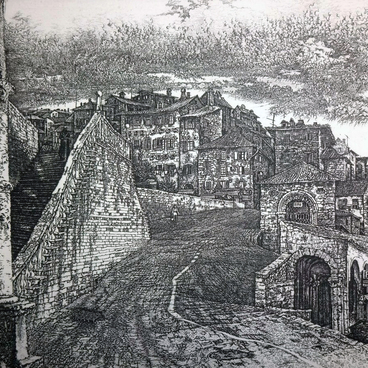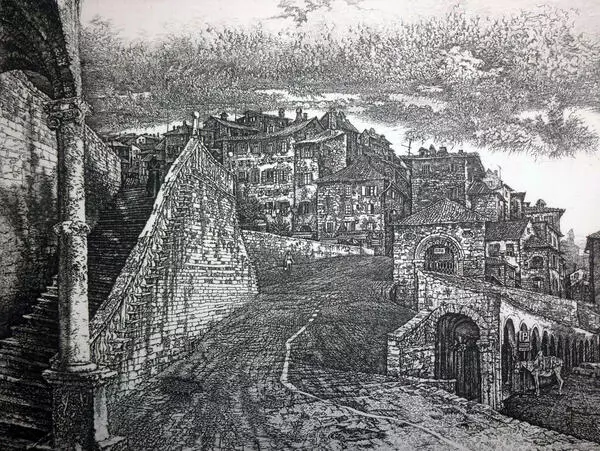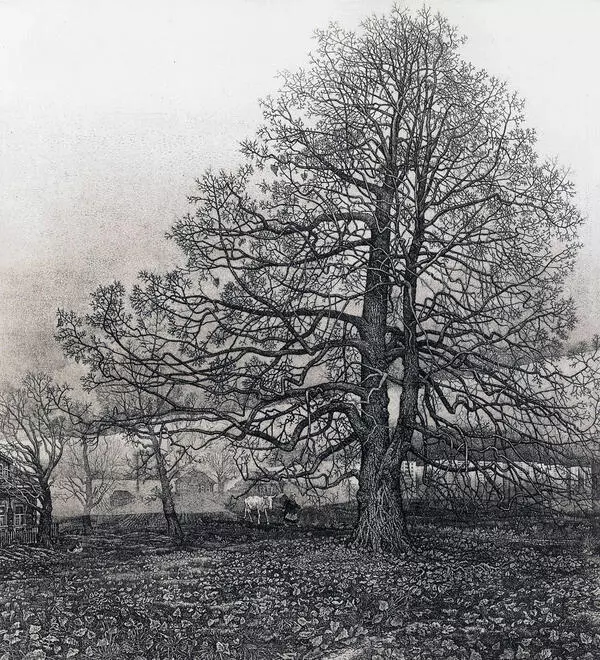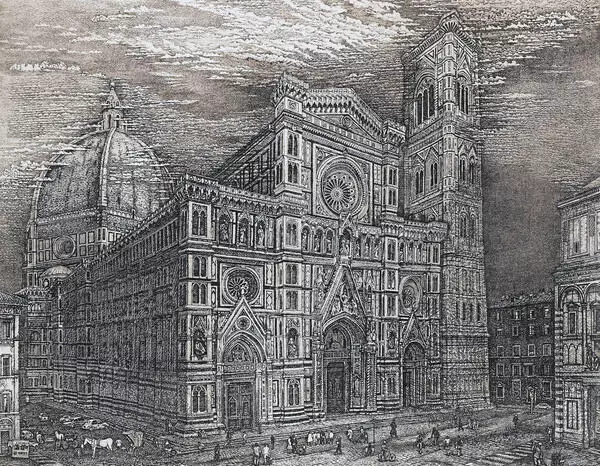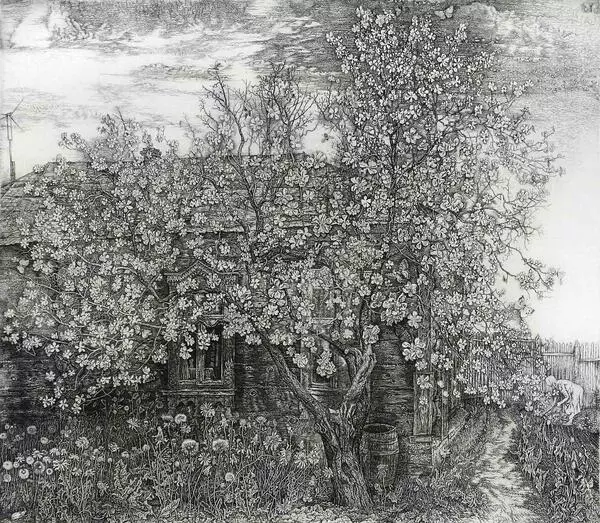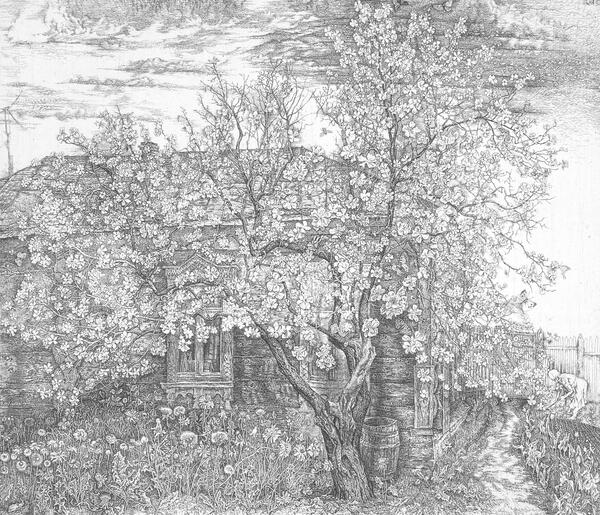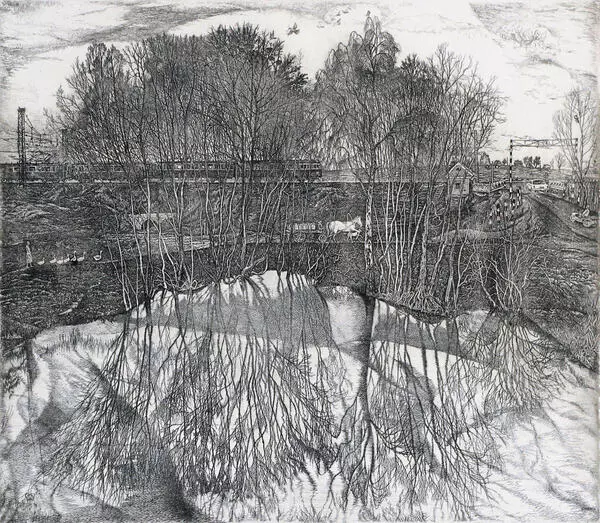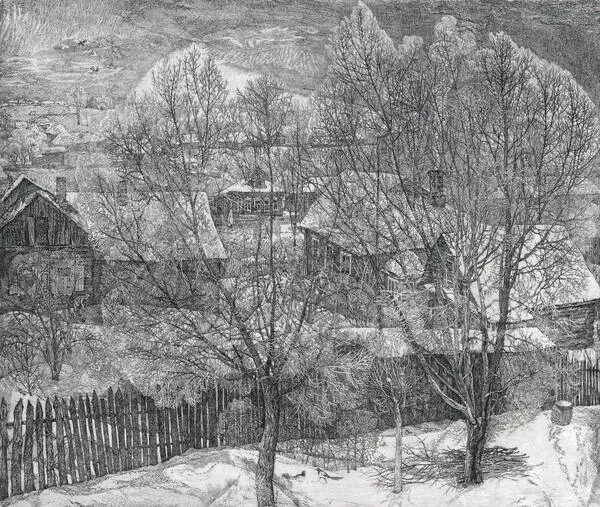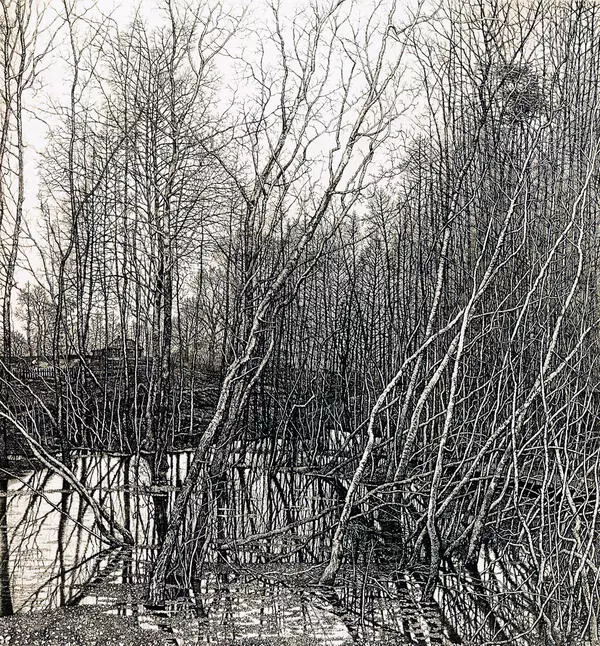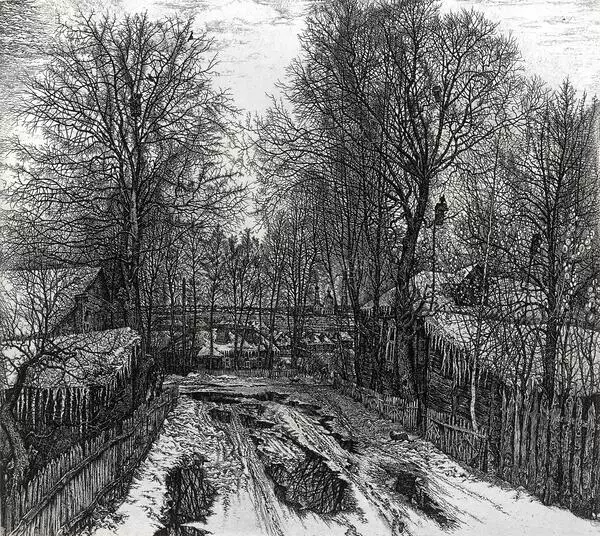The Piazzetta, depicted in the etching by Stanislav Mikhailovich Nikireev, is part of the main square of the Italian city of Venice. St Mark’s Square consists of two parts: the Piazzetta — the area from the Grand Canal to the bell tower — and the Piazza (square) itself. One of the famous squares in Venice is depicted by the artist in two versions — in the daylight and in the evening light. The collection of the Michurinsk Museum of Local Lore houses the second version.
The work is remarkable not only for the beautifully traced masterpieces of Venetian architecture, but also for the view of a dark, rainy, damp space. The drizzling rain is almost physically felt — so great is the skill of the artist, who has succeeded in brilliantly conveying the state of nature itself.
The square was set up in the 9th century as a small space in front of St Mark’s Cathedral. In the early 12th century, it was enlarged to its current size. It was this square that traditionally hosted the city’s main festivities, including the Venetian Carnival. The dominant architectural feature of the square is the Doge’s Palace, pictured on the left-hand side of the etching. It is a great monument of Italian Gothic architecture and one of Venice’s most iconic landmarks. The Doge’s Palace is situated in the immediate vicinity of St Mark’s Cathedral. Although the first building on the site has been known since the 9th century, the construction of the present building took place between 1309 and 1424. Filippo Calendario is believed to have been the chief architect.
At the end of the 16th century, part of the palace burned down and Antonio de Ponti was already in charge of the restoration of the building. The palace was first and foremost the seat of the Doges of the Republic. It was the seat of the Great Council and the Senate as well as the seat of the Supreme Court. The lower floor housed lawyers’ offices, clerical staff and the naval office. The upper balcony served as a public rostrum during the city’s special festivities. At present the building is one of the city’s museums. The Doge’s Palace, along with St Mark’s Basilica, the San Marco library and other buildings, thus forms the main architectural ensemble of the city.
The work is remarkable not only for the beautifully traced masterpieces of Venetian architecture, but also for the view of a dark, rainy, damp space. The drizzling rain is almost physically felt — so great is the skill of the artist, who has succeeded in brilliantly conveying the state of nature itself.
The square was set up in the 9th century as a small space in front of St Mark’s Cathedral. In the early 12th century, it was enlarged to its current size. It was this square that traditionally hosted the city’s main festivities, including the Venetian Carnival. The dominant architectural feature of the square is the Doge’s Palace, pictured on the left-hand side of the etching. It is a great monument of Italian Gothic architecture and one of Venice’s most iconic landmarks. The Doge’s Palace is situated in the immediate vicinity of St Mark’s Cathedral. Although the first building on the site has been known since the 9th century, the construction of the present building took place between 1309 and 1424. Filippo Calendario is believed to have been the chief architect.
At the end of the 16th century, part of the palace burned down and Antonio de Ponti was already in charge of the restoration of the building. The palace was first and foremost the seat of the Doges of the Republic. It was the seat of the Great Council and the Senate as well as the seat of the Supreme Court. The lower floor housed lawyers’ offices, clerical staff and the naval office. The upper balcony served as a public rostrum during the city’s special festivities. At present the building is one of the city’s museums. The Doge’s Palace, along with St Mark’s Basilica, the San Marco library and other buildings, thus forms the main architectural ensemble of the city.
